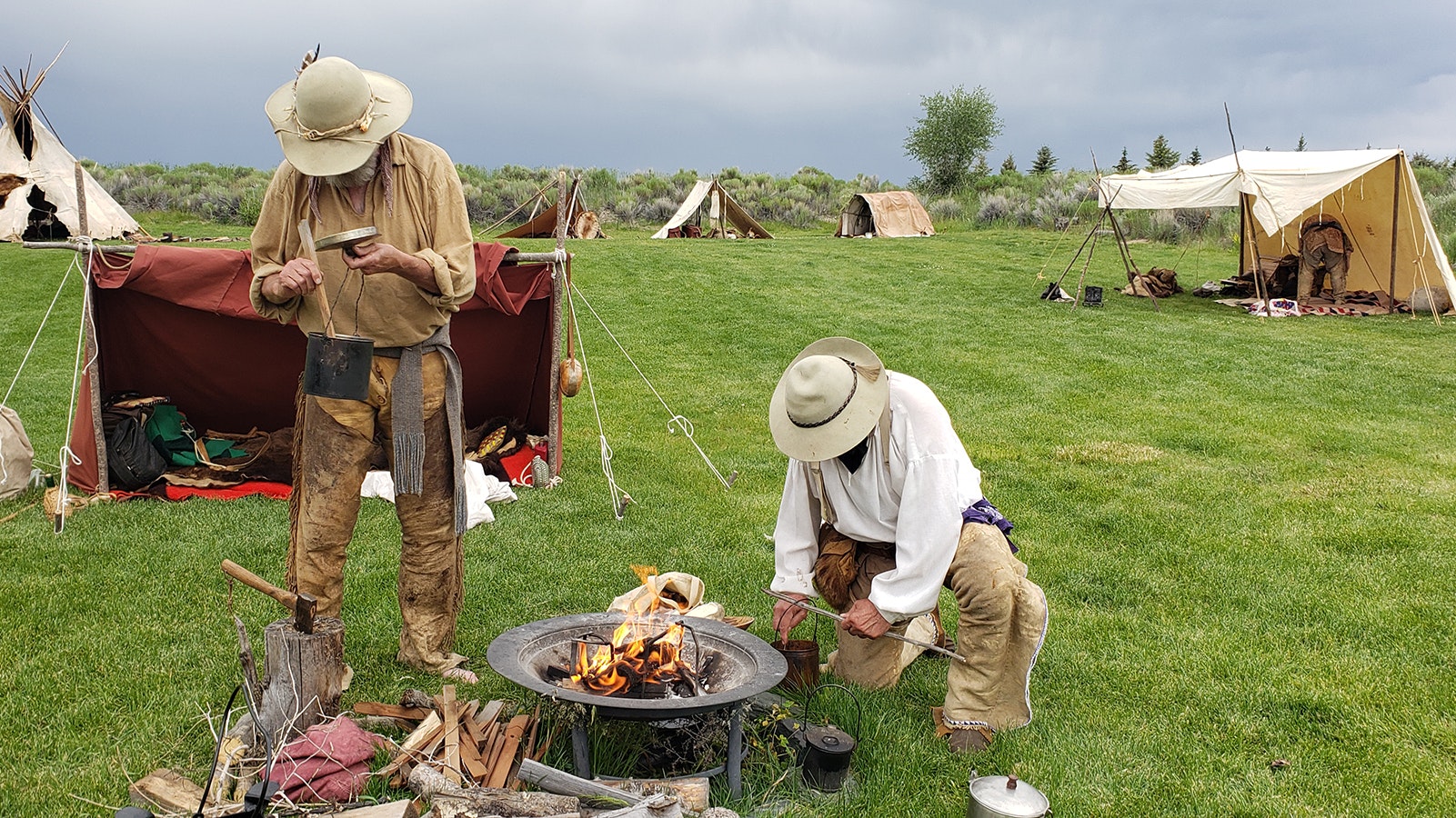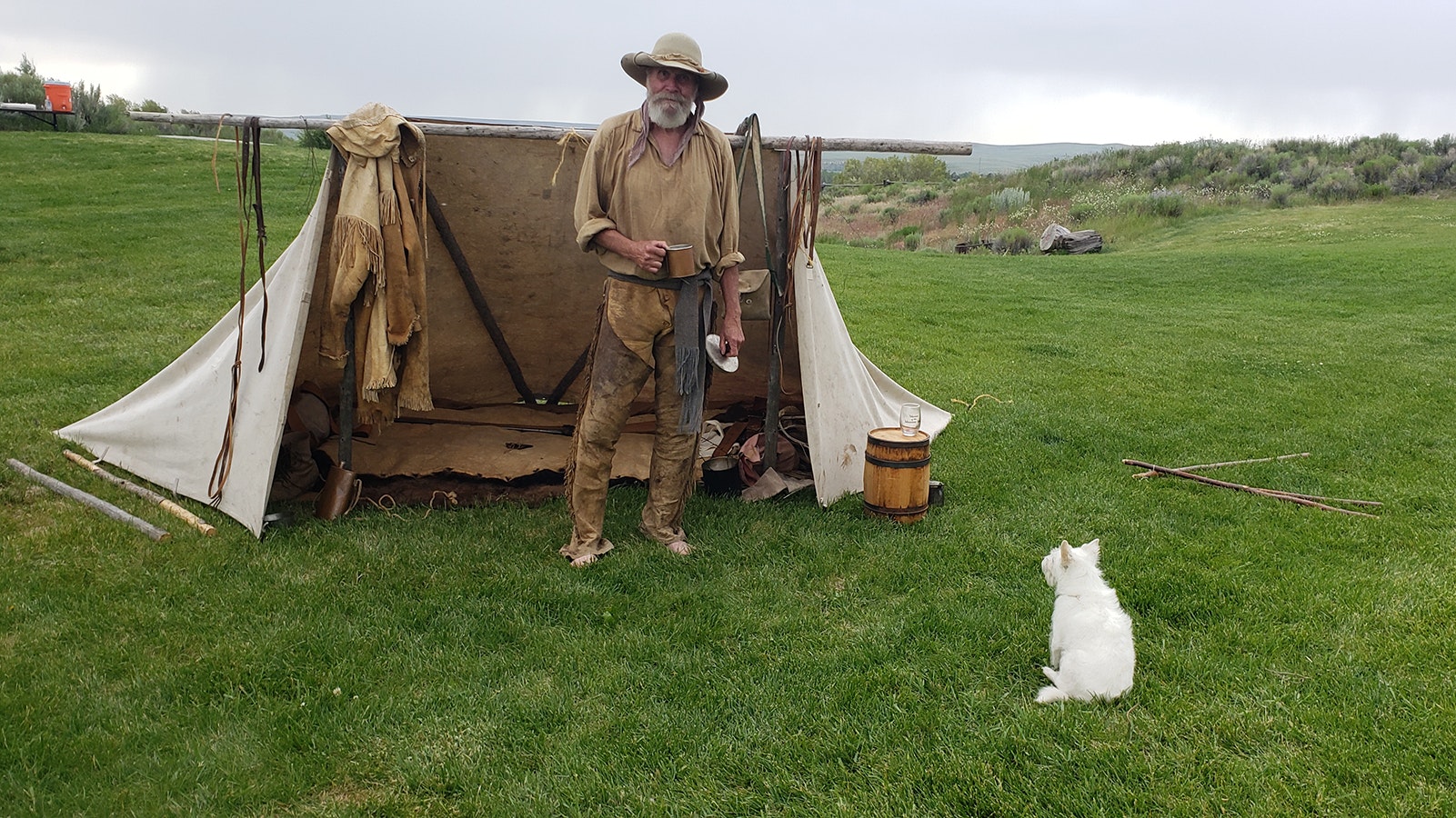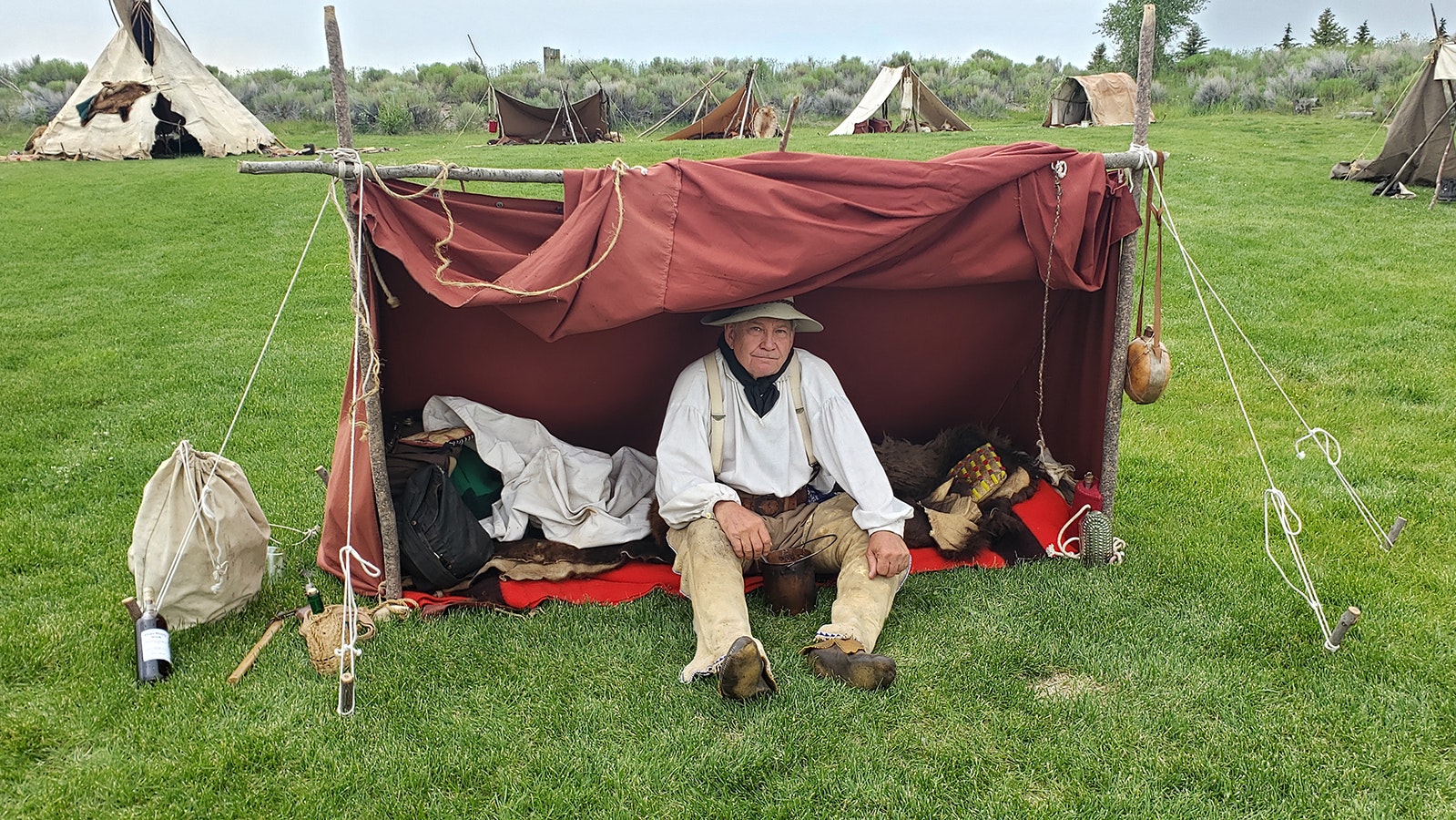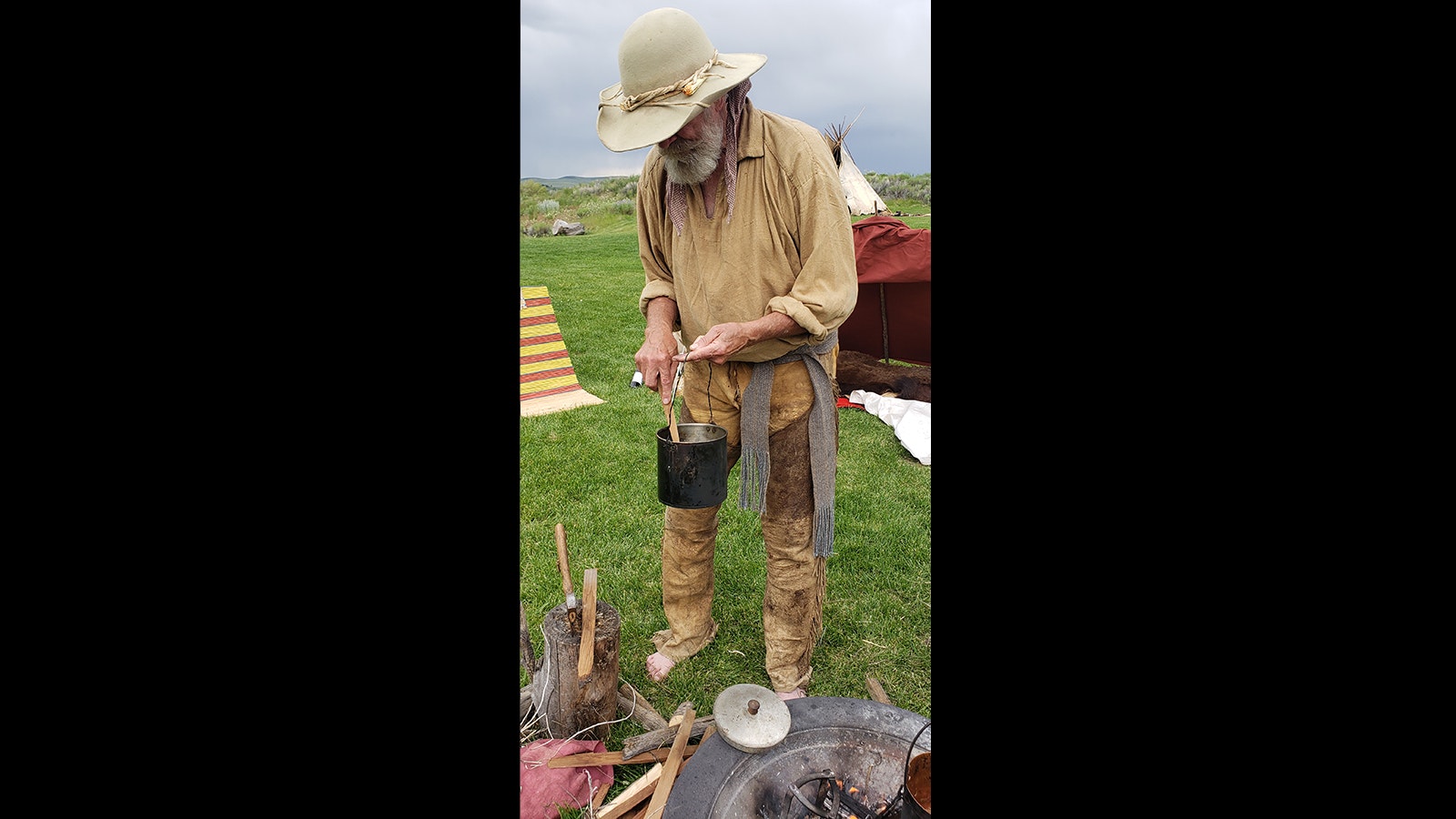PINEDALE — Men sometimes wonder why they do what they do. Sometimes, though, they just don’t have any words for it. Sometimes, it turns out that it was just in their blood all along.
Take George Korhel, for an example. The Buffalo, Wyoming man had been participating in mountain men rendezvous events for almost two decades before he learned that an ancestor of his had once been an actual mountain man.
Jonathan Keeney was his name.
“He came out here and trapped with Jim Bridger,” Korhel told Cowboy State Daily during the recent Green River Rendezvous near Pinedale. “He was in Jim Bridger’s brigade.”
In fact, Keeney could well have stood in exactly the same spot where Korhel was himself standing.
“I don’t know what the word for this would be,” Korhel said, shaking his head and looking out over a horizon where storm clouds loomed over not-so-distant mountains. “It’s almost sacred ground, you know. He probably was right here, he probably walked right here, down along the Green River. And here I am, 200 plus years later, doing the same thing.”
Korhel, a member of the American Mountain Man Association, has been on a mission ever since discovering that his ancestor was a mountain man during the 1830s.
Korhel’s quarry, however, is not the beaver his ancestor once trapped. Instead it is the footsteps of his ancestor, in every place he’s ever been.
“History,” Korhel said, “Is a big part of everybody’s life. We all come from history.”

Go West Young Man
Jonathan Keeney was likely among the 32 or so men William Sublette hired to help him re-supply the Green River Rendezvous in the early 1830s. The particulars of that are something that Korhel is trying to nail down.
“I’m trying to get ahold of William Sublette — I would think that he would have ledgers of who came out with him when they came out to supply that rendezvous,” he said.
Korhel is talking to people with the Museum of the Mountain Man in Pinedale to uncover more clues as to Keeney’s whereabouts in that timeframe.
In the meantime, Korhel has also traveled to other states on Keeney’s trail.
“I went to Vale (in Oregon), and Vale is known as the town of murals,” Korhel said. “I think there’s like 20 murals on the sides of buildings and stuff in town, all on the history of it. And when you come into town, Jonathon Keeney’s mural is the first one you see.”
There’s also a place there, the Rinehart’s Stone House Museum, built on what Korhel said was once the site of Keeney’s trading post. And Korhel has learned that the Oregon Historical Society has one of Keeney’s rifles.
“I’d like to have them either take photos of it or give me more information,” Korhel said. “I’m looking in on Montana, too, because Keeney’s son ended up settling in the Bozeman-Livingston area. He was a sheriff in Livingston, Montana probably like in the 1860s or 70s. He was probably around during the Virginia City gold rush times, and he has an interesting life, too, following in his father’s footsteps.”
Authenticity Is Their Camp Calling Card
Following in the footsteps of history is what the American Mountain Men Association, which annually gathers to help put on the Green River Rendezvous in Pinedale, is all about.
The event sprawls over the entire town of Pinedale, with vendors of modern merchandize in an area, and vendors of old-time merchandize in another area called Trader’s Row. Period-authentic crafts are both demonstrated and sold at Trader’s Row.
You could find everyone from the tin smith to an old-fashioned soda maker. Sodas in the 1830s were becoming all the rage. They were generally lightly carbonated using yeast, the seller explained to Cowboy State Daily, which would also have made them slightly alcoholic.
In this case, since children were among the customers, the sodas had been carbonated using dry ice. Flavors ranged from citrus and cream to old-fashioned root beer, and were served in a glass bottle with an old-fashioned hinge-top.
Closer to the Museum of the Mountain Men, tucked up on a hill that looks out over the land, members of the American Mountain Men Association placed an encampment true to the fur trade era, which lasted from 1824-25 to 1840.
The American Mountain Men Association is by invitation only. Members have all committed to only wear authentic, period-correct clothing of the fur trade era throughout the event.
“The sewing machine wasn’t invented until the 1850s,” Korhel’s campmate Barry Hardin told Cowboy State Daily. “So technically, all of our clothing, everything we have sewn up, is supposed to be hand stitched. That’s the ideal.”
Not only are their clothes authentic, but the gear in the camp is too.
Nothing anachronistic is allowed. No watches, no flashlights, no cell phones. Nothing that a mountain man of old, or a mountaineer, as they called themselves then, wouldn’t have had is allowed.
“We come here out of public service, to do education,” Hardin said. “Why is it important? Well, you don’t know where you’re going if you don’t know where you’ve been.”
Renée Jean can be reached at renee@cowboystatedaily.com.







